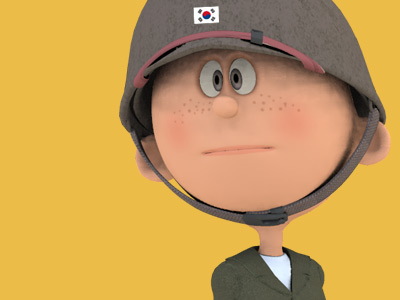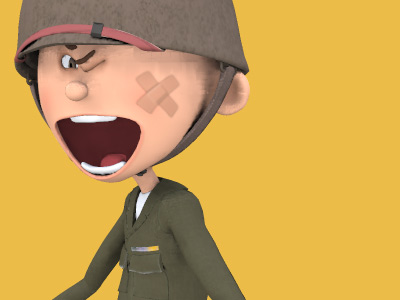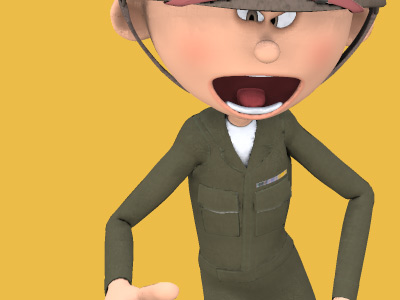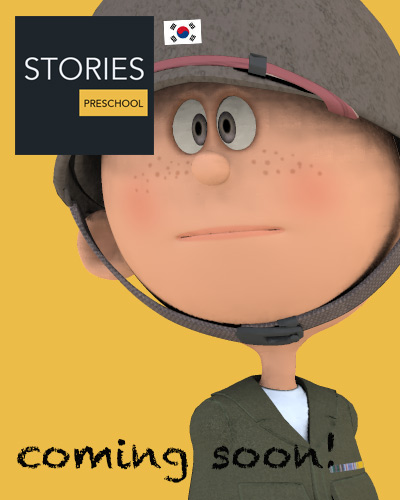Korean War 한국전쟁 (1950-1953)
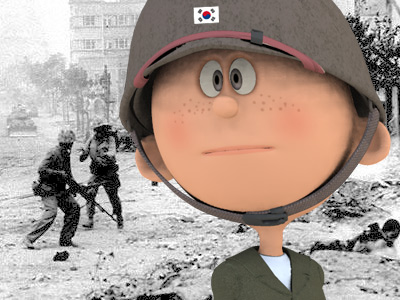
Outbreak of War (1950)
By 1949, South Korean forces had reduced the active number of communist guerrillas in the South from 5,000 to 1,000. However, Kim Il-sung believed that the guerrillas had weakened the South Korean military and that a North Korean invasion would be welcomed by much of the South Korean population. Kim began seeking Stalin's support for an invasion in March 1949, travelling to Moscow to attempt to persuade him.
Initially, Stalin did not think the time was right for a war in Korea. Chinese Communist forces were still fighting in China. American forces were still stationed in South Korea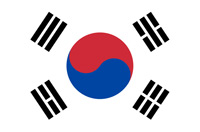 South Korea officially the Republic of Korea (ROK), is a country in East Asia, constituting the southern part of the Korean Peninsula and sharing a land border with North Korea. Since the 21st century, South Korea has been renowned for its globally influential pop culture, particularly in music (K-pop), TV dramas (K-dramas) and cinema, a phenomenon referred to as the Korean wave. (they would complete their withdrawal in June 1949) and Stalin did not want the Soviet Union to become embroiled in a war with the United States.
South Korea officially the Republic of Korea (ROK), is a country in East Asia, constituting the southern part of the Korean Peninsula and sharing a land border with North Korea. Since the 21st century, South Korea has been renowned for its globally influential pop culture, particularly in music (K-pop), TV dramas (K-dramas) and cinema, a phenomenon referred to as the Korean wave. (they would complete their withdrawal in June 1949) and Stalin did not want the Soviet Union to become embroiled in a war with the United States.
By spring 1950, Stalin believed the strategic situation had changed. The Soviets Soviet Union, officially the Union of Soviet Socialist Republics (USSR), was a transcontinental country that spanned much of Eurasia from 1922 to 1991. The Soviet Union fall process began with growing unrest in the Union's various constituent national republics developing into an incessant political and legislative conflict between them and the central government. Estonia was the first Soviet republic to declare state sovereignty inside the Union. had detonated their first nuclear bomb in September 1949; American soldiers had fully withdrawn from Korea; the Americans had not intervened to stop the communist victory in China, and Stalin calculated that the Americans would be even less willing to fight in Korea—which had seemingly much less strategic significance. The Soviets had also cracked the codes used by the United States
Soviet Union, officially the Union of Soviet Socialist Republics (USSR), was a transcontinental country that spanned much of Eurasia from 1922 to 1991. The Soviet Union fall process began with growing unrest in the Union's various constituent national republics developing into an incessant political and legislative conflict between them and the central government. Estonia was the first Soviet republic to declare state sovereignty inside the Union. had detonated their first nuclear bomb in September 1949; American soldiers had fully withdrawn from Korea; the Americans had not intervened to stop the communist victory in China, and Stalin calculated that the Americans would be even less willing to fight in Korea—which had seemingly much less strategic significance. The Soviets had also cracked the codes used by the United States The United States of America (U.S.A. or USA), commonly known as the United States (U.S. or US) or America, is a country in North America. It is the world's third-largest country by both land and total area. The United States shares land borders with Canada to its north and with Mexico to its south. The national capital is Washington, D.C., and the most populous city and financial center is New York City. to communicate with the US embassy in Moscow, and reading these dispatches convinced Stalin that Korea did not have the importance to the US that would warrant a nuclear confrontation. Stalin began a more aggressive strategy in Asia based on these developments, including promising economic and military aid to China through the Sino–Soviet Friendship, Alliance, and Mutual Assistance Treaty.
The United States of America (U.S.A. or USA), commonly known as the United States (U.S. or US) or America, is a country in North America. It is the world's third-largest country by both land and total area. The United States shares land borders with Canada to its north and with Mexico to its south. The national capital is Washington, D.C., and the most populous city and financial center is New York City. to communicate with the US embassy in Moscow, and reading these dispatches convinced Stalin that Korea did not have the importance to the US that would warrant a nuclear confrontation. Stalin began a more aggressive strategy in Asia based on these developments, including promising economic and military aid to China through the Sino–Soviet Friendship, Alliance, and Mutual Assistance Treaty.
Throughout 1949 and 1950 the Soviets continued to arm North Korea North Korea, officially the Democratic People's Republic of Korea (DPRK) is a country in East Asia, in the northern part of the Korean Peninsula. The capital and largest city is Pyongyang. The Korean Demilitarized Zone marks the boundary between North Korea and South Korea. The legitimacy of this border is not accepted by either side, as both states claim to be the legitimate government of the entire peninsula.. After the Communist victory in the Chinese Civil War, ethnic Korean units in the Chinese People's Liberation Army (PLA) were released to North Korea. The combat veterans from China, the tanks, artillery and aircraft supplied by the Soviets, and rigorous training increased North Korea's military superiority over the South, which had been armed by the American military with mostly small arms and given no heavy weaponry such as tanks.
North Korea, officially the Democratic People's Republic of Korea (DPRK) is a country in East Asia, in the northern part of the Korean Peninsula. The capital and largest city is Pyongyang. The Korean Demilitarized Zone marks the boundary between North Korea and South Korea. The legitimacy of this border is not accepted by either side, as both states claim to be the legitimate government of the entire peninsula.. After the Communist victory in the Chinese Civil War, ethnic Korean units in the Chinese People's Liberation Army (PLA) were released to North Korea. The combat veterans from China, the tanks, artillery and aircraft supplied by the Soviets, and rigorous training increased North Korea's military superiority over the South, which had been armed by the American military with mostly small arms and given no heavy weaponry such as tanks.
In April 1950, Stalin gave Kim permission to invade the South under the condition that Mao would agree to send reinforcements if they became needed. Stalin made it clear that Soviet forces would not openly engage in combat, to avoid a direct war with the Americans. Kim met with Mao in May 1950. Mao was concerned that the Americans would intervene but agreed to support the North Korean invasion. China desperately needed the economic and military aid promised by the Soviets. At that time, the Chinese were in the process of demobilizing half of the PLA's 5.6 million soldiers. However, Mao sent more ethnic Korean PLA veterans to Korea and promised to move an army closer to the Korean border. Once Mao's commitment was secured, preparations for war accelerated.
Soviet generals with extensive combat experience from the Second World War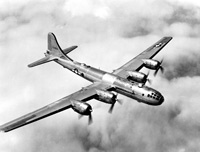 World War II or the Second World War, often abbreviated as WWII or WW2, was a world war that lasted from 1939 to 1945. It involved the vast majority of the world's countries—including all of the great powers—forming two opposing military alliances: the Allies and the Axis powers. World War II was a total war that directly involved more than 100 million personnel from more than 30 countries. World War II is generally considered to have begun on 1 September 1939, when Nazi Germany, under Adolf Hitler, invaded Poland. View World War II » were sent to North Korea as the Soviet Advisory Group. These generals completed the plans for the attack by May. The original plans called for a skirmish to be initiated in the Ongjin Peninsula on the west coast of Korea. The North Koreans would then launch a "counterattack" that would capture Seoul and encircle and destroy the South Korean army. The final stage would involve destroying South Korean government remnants, capturing the rest of South Korea, including the ports.
World War II or the Second World War, often abbreviated as WWII or WW2, was a world war that lasted from 1939 to 1945. It involved the vast majority of the world's countries—including all of the great powers—forming two opposing military alliances: the Allies and the Axis powers. World War II was a total war that directly involved more than 100 million personnel from more than 30 countries. World War II is generally considered to have begun on 1 September 1939, when Nazi Germany, under Adolf Hitler, invaded Poland. View World War II » were sent to North Korea as the Soviet Advisory Group. These generals completed the plans for the attack by May. The original plans called for a skirmish to be initiated in the Ongjin Peninsula on the west coast of Korea. The North Koreans would then launch a "counterattack" that would capture Seoul and encircle and destroy the South Korean army. The final stage would involve destroying South Korean government remnants, capturing the rest of South Korea, including the ports.
On 7 June 1950, Kim Il-sung called for a Korea-wide election on 5–8 August 1950 and a consultative conference in Haeju on 15–17 June 1950. On 11 June, the North sent three diplomats to the South as a peace overture that Rhee rejected outright. On 21 June, Kim Il-Sung revised his war plan to involve general attack across the 38th parallel, rather than a limited operation in the Ongjin peninsula. Kim was concerned that South Korean agents had learned about the plans and South Korean forces were strengthening their defenses. Stalin agreed to this change of plan.
While these preparations were underway in the North, there were frequent clashes along the 38th parallel, especially at Kaesong and Ongjin, many initiated by the South. The Republic of Korea Army (ROK Army) was being trained by the U.S. Korean Military Advisory Group (KMAG). On the eve of war, KMAG's commander General William Lynn Roberts voiced utmost confidence in the ROK Army and boasted that any North Korean invasion would merely provide "target practice". For his part, Syngman Rhee repeatedly expressed his desire to conquer the North, including when American diplomat John Foster Dulles visited Korea on 18 June.
Although some South Korean and American intelligence officers were predicting an attack from the North, similar predictions had been made before and nothing had happened. The Central Intelligence Agency did note the southward movement by the Korean People's Army (KPA), but assessed this as a "defensive measure" and concluded an invasion was "unlikely". On 23 June, UN observers inspected the border and did not detect that war was imminent.
At dawn on Sunday, 25 June 1950, the Korean People's Army crossed the 38th parallel behind artillery fire. The KPA justified its assault with the claim that ROK troops had attacked first, and that they were aiming to arrest and execute the "bandit traitor Syngman Rhee". Fighting began on the strategic Ongjin peninsula in the west. There were initial South Korean claims that they had captured the city of Haeju, and this sequence of events has led some scholars to argue that the South Koreans actually fired first.
Whoever fired the first shots in Ongjin, within an hour, North Korean forces attacked all along the 38th parallel. The North Koreans had a combined arms force including tanks supported by heavy artillery. The South Koreans did not have any tanks, anti-tank weapons, nor heavy artillery, that could stop such an attack. In addition, South Koreans committed their forces in a piecemeal fashion and these were routed within a few days.
On 27 June, Rhee evacuated from Seoul with some of the government. On 28 June, at 2 am, the South Korean Army blew up the highway Hangang Bridge across the Han River in an attempt to stop the North Korean army. The bridge was detonated while 4,000 refugees were crossing it, and hundreds were killed. Destroying the bridge also trapped many South Korean military units north of the Han River. In spite of such desperate measures, Seoul fell that same day. A number of South Korean National Assemblymen remained in Seoul when it fell, and forty-eight subsequently pledged allegiance to the North.
On 28 June, Rhee ordered the massacre of suspected political opponents in his own country.
In five days, the South Korean forces, which had 95,000 men on 25 June, was down to less than 22,000 men. In early July, when U.S. forces arrived, what was left of the South Korean forces were placed under U.S. operational command of the United Nations (UN)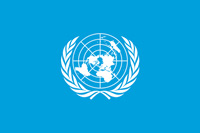 United Nations (UN) is an intergovernmental organization whose stated purposes are to maintain international peace and security, develop friendly relations among nations, achieve international cooperation, and be a centre for harmonizing the actions of nations. The UN was established after World War II with the aim of preventing future world wars, succeeding the League of Nations, which was characterized as ineffective. Command.
United Nations (UN) is an intergovernmental organization whose stated purposes are to maintain international peace and security, develop friendly relations among nations, achieve international cooperation, and be a centre for harmonizing the actions of nations. The UN was established after World War II with the aim of preventing future world wars, succeeding the League of Nations, which was characterized as ineffective. Command.
Factors in US Intervention
The Truman administration was unprepared for the invasion. Korea was not included in the strategic Asian Defense Perimeter outlined by Secretary of State Dean Acheson. Military strategists were more concerned with the security of Europe against the Soviet Union than East Asia. At the same time, the Administration was worried that a war in Korea could quickly widen into another world war should the Chinese or Soviets decide to get involved as well.
One facet of the changing attitude toward Korea and whether to get involved was Japan. Especially after the fall of China to the Communists, U.S. East Asian experts saw Japan Japan is an island country in East Asia. Beginning in the 12th century, political power was held by a series of military dictators (shōgun) and feudal lords (daimyō) and enforced by a class of warrior nobility (samurai). In the Meiji period, the empire adopted a Western-modeled constitution and pursued a program of industrialization and modernization. A global leader in the automotive, robotics and electronics industries, Japan has made significant contributions to science and technology. as the critical counterweight to the Soviet Union and China in the region. While there was no United States policy that dealt with South Korea directly as a national interest, its proximity to Japan increased the importance of South Korea. Said Kim: "The recognition that the security of Japan required a non-hostile Korea led directly to President Truman's decision to intervene... The essential point... is that the American response to the North Korean attack stemmed from considerations of US policy toward Japan." A major consideration was the possible Soviet reaction in the event that the US intervened. The Truman administration was fretful that a war in Korea was a diversionary assault that would escalate to a general war in Europe once the United States committed in Korea. At the same time, "[t]here was no suggestion from anyone that the United Nations or the United States could back away from [the conflict]". Yugoslavia–a possible Soviet target because of the Tito-Stalin Split—was vital to the defense of Italy and Greece, and the country was first on the list of the National Security Council's post-North Korea invasion list of "chief danger spots". Truman believed if aggression went unchecked a chain reaction would be initiated that would marginalize the United Nations and encourage Communist aggression elsewhere. The UN Security Council approved the use of force to help the South Koreans and the US immediately began using what air and naval forces that were in the area to that end. The Administration still refrained from committing on the ground because some advisers believed the North Koreans could be stopped by air and naval power alone.
Japan is an island country in East Asia. Beginning in the 12th century, political power was held by a series of military dictators (shōgun) and feudal lords (daimyō) and enforced by a class of warrior nobility (samurai). In the Meiji period, the empire adopted a Western-modeled constitution and pursued a program of industrialization and modernization. A global leader in the automotive, robotics and electronics industries, Japan has made significant contributions to science and technology. as the critical counterweight to the Soviet Union and China in the region. While there was no United States policy that dealt with South Korea directly as a national interest, its proximity to Japan increased the importance of South Korea. Said Kim: "The recognition that the security of Japan required a non-hostile Korea led directly to President Truman's decision to intervene... The essential point... is that the American response to the North Korean attack stemmed from considerations of US policy toward Japan." A major consideration was the possible Soviet reaction in the event that the US intervened. The Truman administration was fretful that a war in Korea was a diversionary assault that would escalate to a general war in Europe once the United States committed in Korea. At the same time, "[t]here was no suggestion from anyone that the United Nations or the United States could back away from [the conflict]". Yugoslavia–a possible Soviet target because of the Tito-Stalin Split—was vital to the defense of Italy and Greece, and the country was first on the list of the National Security Council's post-North Korea invasion list of "chief danger spots". Truman believed if aggression went unchecked a chain reaction would be initiated that would marginalize the United Nations and encourage Communist aggression elsewhere. The UN Security Council approved the use of force to help the South Koreans and the US immediately began using what air and naval forces that were in the area to that end. The Administration still refrained from committing on the ground because some advisers believed the North Koreans could be stopped by air and naval power alone.
The Truman administration was still uncertain if the attack was a ploy by the Soviet Union or just a test of U.S. resolve. The decision to commit ground troops became viable when a communiqué was received on 27 June indicating the Soviet Union would not move against U.S. forces in Korea. The Truman administration now believed it could intervene in Korea without undermining its commitments elsewhere.
United Nations Security Council Resolutions
On 25 June 1950, the United Nations Security Council unanimously condemned the North Korean invasion of the Republic of Korea, with UN Security Council Resolution 82. The Soviet Union, a veto-wielding power, had boycotted the Council meetings since January 1950, protesting that the Republic of China (Taiwan), not the People's Republic of China, held a permanent seat in the UN Security Council. After debating the matter, the Security Council, on 27 June 1950, published Resolution 83 recommending member states provide military assistance to the Republic of Korea. On 27 June President Truman ordered U.S. air and sea forces to help the South Korean regime. On 4 July the Soviet Deputy Foreign Minister accused the United States of starting armed intervention on behalf of South Korea.
The Soviet Union challenged the legitimacy of the war for several reasons. The ROK Army intelligence upon which Resolution 83 was based came from U.S. Intelligence; North Korea was not invited as a sitting temporary member of the UN, which violated UN Charter Article 32; and the Korean conflict was beyond the UN Charter's scope, because the initial north–south border fighting was classed as a civil war. Because the Soviet Union was boycotting the Security Council at the time, legal scholars posited that deciding upon an action of this type required the unanimous vote of the five permanent members.
Comparison of Military Forces
By mid-1950, North Korean forces numbered between 150,000 and 200,000 troops, organized into 10 infantry divisions, one tank division, and one air force division, with 210 fighter planes and 280 tanks, who captured scheduled objectives and territory, among them Kaesong, Chuncheon, Uijeongbu, and Ongjin. Their forces included 274 T-34-85 tanks, 200 artillery pieces, 110 attack bombers, some 150 Yak fighter planes, 78 Yak trainers, and 35 reconnaissance aircraft. In addition to the invasion force, the North KPA had 114 fighters, 78 bombers, 105 T-34-85 tanks, and some 30,000 soldiers stationed in reserve in North Korea. Although each navy consisted of only several small warships, the North and South Korean navies fought in the war as sea-borne artillery for their in-country armies.
In contrast, the ROK Army defenders were relatively unprepared and ill-equipped. In South to the Naktong, North to the Yalu (1961), R.E. Appleman reports the ROK forces' low combat readiness as of 25 June 1950. The ROK Army had 98,000 soldiers (65,000 combat, 33,000 support), no tanks (they had been requested from the U.S. military, but requests were denied), and a 22-piece air force comprising 12 liaison-type and 10 AT6 advanced-trainer airplanes. There were no large foreign military garrisons in Korea at the time of the invasion, but there were large U.S. garrisons and air forces in Japan.
Within days of the invasion, masses of ROK Army soldiers—of dubious loyalty to the Syngman Rhee regime—were either retreating southwards or were defecting en masse to the northern side, the KPA.
HISTORY
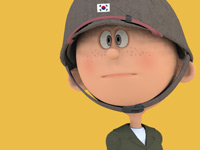
RESOURCES
This article uses material from the Wikipedia article "Korean War", which is released under the Creative Commons Attribution-Share-Alike License 3.0.
© Stories Preschool. All Rights Reserved.
